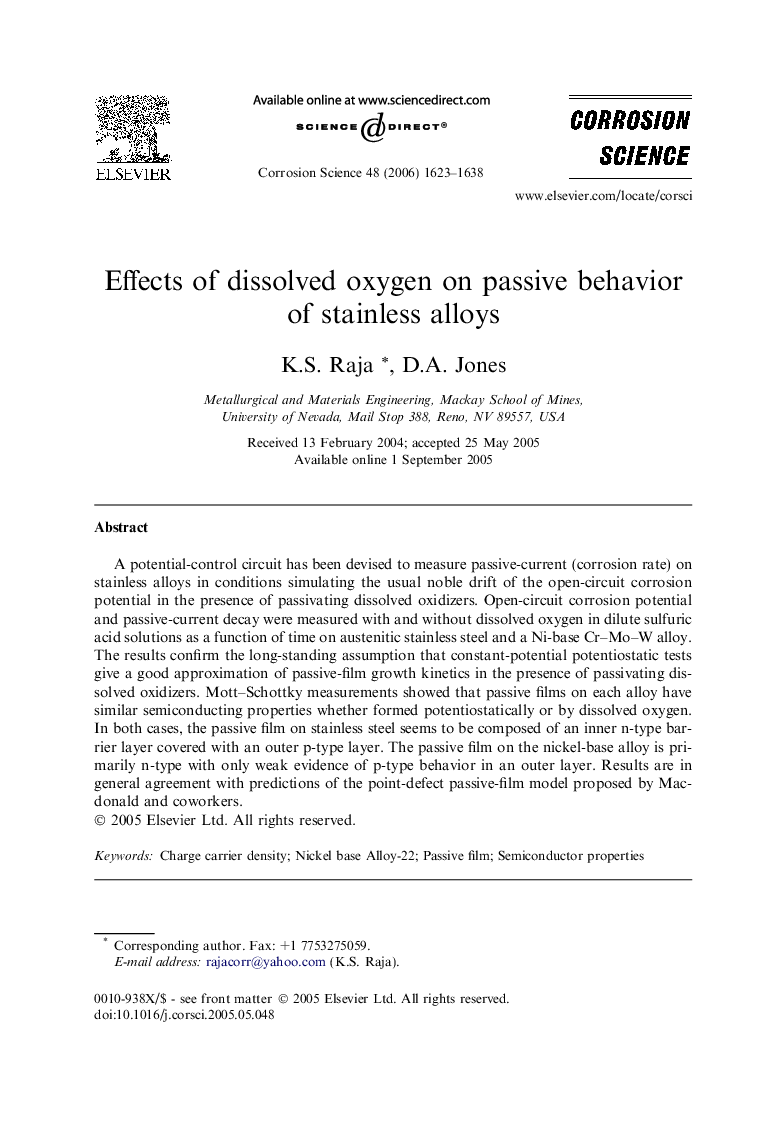| Article ID | Journal | Published Year | Pages | File Type |
|---|---|---|---|---|
| 1472370 | Corrosion Science | 2006 | 16 Pages |
A potential-control circuit has been devised to measure passive-current (corrosion rate) on stainless alloys in conditions simulating the usual noble drift of the open-circuit corrosion potential in the presence of passivating dissolved oxidizers. Open-circuit corrosion potential and passive-current decay were measured with and without dissolved oxygen in dilute sulfuric acid solutions as a function of time on austenitic stainless steel and a Ni-base Cr–Mo–W alloy. The results confirm the long-standing assumption that constant-potential potentiostatic tests give a good approximation of passive-film growth kinetics in the presence of passivating dissolved oxidizers. Mott–Schottky measurements showed that passive films on each alloy have similar semiconducting properties whether formed potentiostatically or by dissolved oxygen. In both cases, the passive film on stainless steel seems to be composed of an inner n-type barrier layer covered with an outer p-type layer. The passive film on the nickel-base alloy is primarily n-type with only weak evidence of p-type behavior in an outer layer. Results are in general agreement with predictions of the point-defect passive-film model proposed by Macdonald and coworkers.
